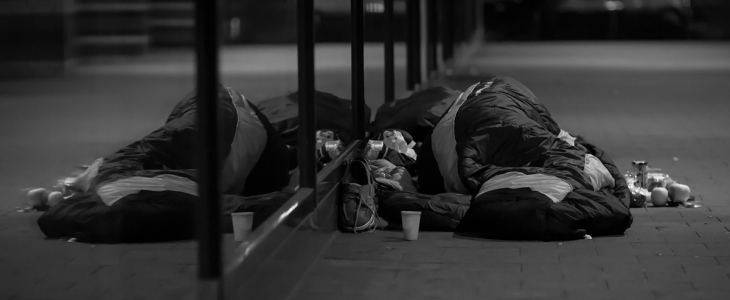The Link Between LGBTQ Youth and Human Trafficking
June is pride month!
We’re kicking off pride month seeking to understand the increased vulnerability of LGBTQ within human trafficking.
The United Nations reports that nearly 1.8 million children (individuals under the age of 18) are trafficked into the global sex trade each year. The children enslaved in the human trafficking industry face endless abuse, discrimination, and neglect as traffickers prey on their naiveté and innocence. The numbers of children affected by the sex industry are even more staggering for the LGBTQ community (those who identify as lesbian, gay, bisexual, transgender, queer, or questioning). LGBTQ youth are disproportionately affected by violence and stigmatization, making them more susceptible to the coercive influences of human trafficking.
While human trafficking can affect anyone, the industry largely preys on those who make up the most vulnerable, alienated communities in society. Youth who identify as LGBTQ are a part of this extremely vulnerable and highly scrutinized community. These individuals experience high rates of marginalization, poverty, and hate crimes, all of which are precursors to sexual violence. That is, children who identify as LGBTQ are typically more likely to be victims of human trafficking, domestic, and sexual violence than their heterosexual peers.
A study by the Polaris Project reveals that homeless LGBTQ youth are 7.4x more likely to experience acts of sexual violence than heterosexual individuals. Accordingly, Loyola researchers found that roughly 56% of transgender youth are involved in the sex trade. As a whole, these studies confirm that the population of LGBTQ individuals is disproportionately affected by violence and discrimination. These individuals are alienated by a society that attacks their gender identity, sexual preferences, and physical health.
As a result of the social stigma and violence faced by the LGBTQ community, its youth are heavily entwined in the sex trafficking industry. The most prominent risk factor for entering this industry is homelessness. With over 26% of LGBTQ adolescents rejected from their families, a startling 40% of them make up the homeless youth population. Driven by parental and societal rejection, bullying, and inadequate support systems, this neglected group is left to fend for themselves on the street, where 1 in 3 of them is likely to be recruited by a trafficker within 48-hours of leaving home.
After running away, these children commonly fall into the hands of human traffickers who promise to accept them and provide for their basic needs. A report by the Polaris Project explains that traffickers, “seek to meet the [LGBTQ] youth’s needs as a way to build rapport and dependency. They may offer a sense of family, protection, or love to build a sense of relationship and loyalty.” One thing remains clear - the familial love and social support that is often absent in the lives of homeless LGBTQ youth drive these individuals into the hands of human traffickers who claim to provide this love for them.
Traffickers are able to coerce LGBTQ youth into the human trafficking industry for a variety of other reasons. Their lack of belonging and social alienation, coupled with their financial destitution and low self-esteem which is characteristic of this age group make them prime targets for traffickers. By preying on the insecurities of a vulnerable population, traffickers entrench the children into an industry in which they have little hope of escaping. In fact, the Polaris Project reports that LGBTQ are often reluctant to disclose their situation due to the stigma of commercial sex and the control and coercion that traffickers hold over them. Their 2016 report reveals that, “LGBTQ youth may fear the repercussions of reporting their situation, particularly if they worry others will mistreat or not believe them because of their gender identity or sexual orientation.”
Thus, LGBTQ youth are trapped in this industry largely because of society’s intolerance. They live in a society that berates them and downplays the violence they experience due to the rampant social stigma that exists. The systems of support that are in place to help these individuals are less successful because of this stigma. In fact, law enforcement, homeless shelters, and victim service providers can perpetrate the same violence they aim to reduce. LGBTQ individuals report that law enforcement has been “hostile” and “indifferent” towards helping them. The National Coalition of Anti-Violence Programs concludes this indifference and hostility are why more than half of LGBTQ victims do not report their attacks to police and victim service providers.
The Human Rights Fund illuminates the root cause of the discrimination and violence faced by the LGBTQ community: the failure of service providers and society at large to provide a safe, comfortable, and accepting environment for the youth that make up this community. Our communities, as a whole, especially the systems of support that exist within it, must strive to not be influenced by the social stigma that alienates the LGBTQ community. We must control the way we act towards others so that we can protect the livelihoods of those who are disproportionately affected by violence and sexual abuse. The driving force that leads the LGBTQ to such dire situations is one we can control - our attitudes. And because of this, we must do everything in our power to provide the love that secludes them from the freedom experienced by most in our society.
About the Author
Sarah Beech is a Junior at the University of Texas at Austin who is studying psychology and government. She is most passionate about fighting against the various human rights abuses that occur around us. In her free time she likes to watch Netflix, hang out with her friends, and try new restaurants. Her favorite quote is, "Never let the fear of striking out keep you from playing the game" (“A Cinderella Story”).







